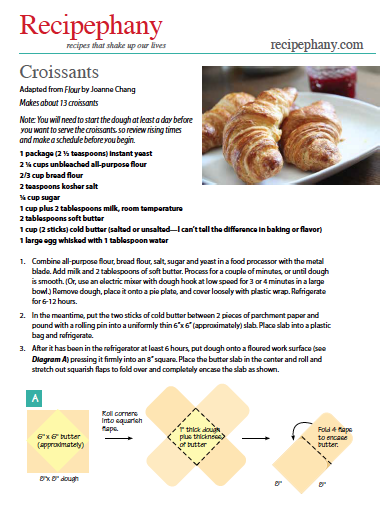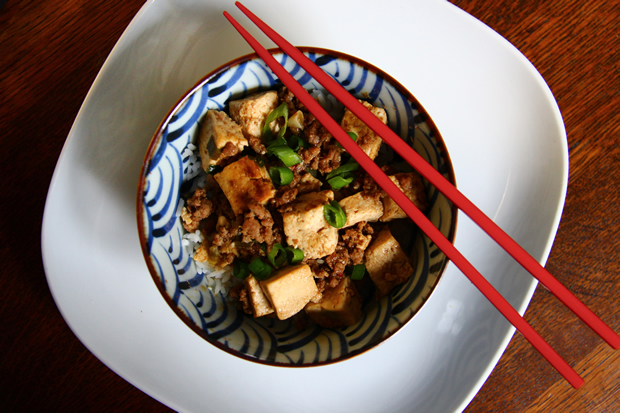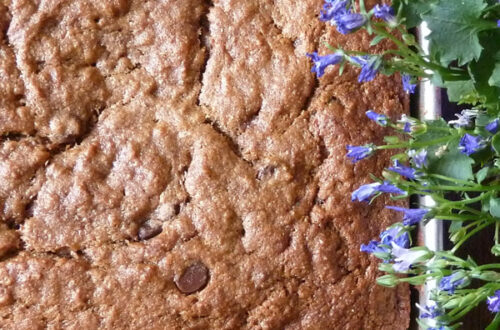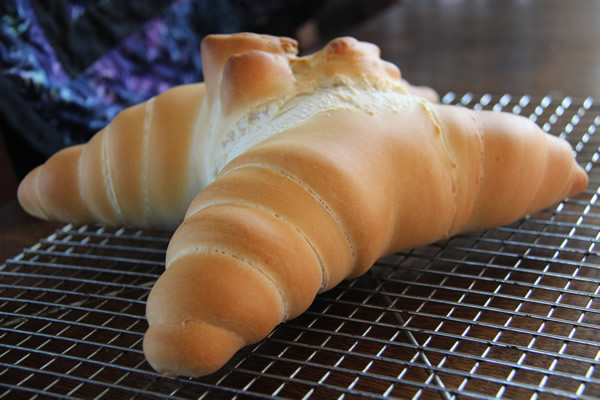I just tried this recipe and was thunderstruck. Here were high, flaky croissants, the kind I’d expect to pull out of a butter-stained bakery bag rather than right out of my oven. The French call it un coup de foudre—love at first sight—and I’ve fallen hard for this recipephany.
My dreams of baking authentic croissants go way back to my advertising copywriting days at “The Pit.” (See “How to Fowl-Up a Chicken.”) In a desperate attempt to escape that basement sweatshop, I came within a gluten-strand of opening a bakery with a “Best-in-Boston” croissant baker who happened to live downstairs from us. In a moment of over-caffeinated inspiration, I named the prospective bakery Croissant Crazy (“kwassahn kwazy”) and eyed an empty storefront in Brookline Village. I had second thoughts, though, about the drudgery, pre-dawn work hours and the perils of partnership with a stranger. So when my favorite client, Baxter Travenol, offered me a plum job and promised to bankroll my MBA, I stuck with both my professional career and amateur baking status.
As close as I got to selling croissants, I remained clueless about making them. The recipes I tried yielded doughy crescents more Poppin’-Fresh than French.
Last week I flipped through Joanne Chang’s Flour cookbook and discovered her recipe. Founder of the successful and trendy Boston bakery called simply Flour, she devotes nearly 2,000 words to her well-honed method. With sincerity and generosity, she reveals how the pros do it. Her recipe leaks the plans for perfect croissant lamination—delicate multilayers of butter and silky-smooth dough. Thanks to her, I’m finally in on the lightly-floured secret handshake of the French pastry chef.
Croissants are as much origami as baking. And origami begs for diagrams. Chang didn’t include any, so I’ve drawn them to show the folding and cutting steps at a glance. Since they won’t fit on this post, please see the full Recipephany Croissant Recipe.
Be precise, use a ruler, and fold along the dotted lines. If you’re like me, you’ll love playing with the dough, but there’s also a lot of waiting. Don’t skimp on the long rises—they improve texture and deepen flavor. And—here’s the secret to flakiness—once you fold the dough into a package, don’t start by rolling it out. First press firmly with the rolling pin up and down over the length of the dough, which will create ridges and flatten it down close to the right size. Then roll out the dough just to smooth the ridges and get to the final size. This distributes the butter evenly between the layers and prevents the top layer from stretching beyond the others. You’ll be rewarded with delicious paper-thin layers and a lovely flurry of tasty brown flakes.
For ease and simplicity, I changed Chang’s procedure slightly so I could use my food processor. I also pounded out the slab of butter with a rolling pin rather than using a mixer because it seemed tidier. But I stuck to her origami technique and recommend you do the same.
Have fun and go croissant crazy!










7 Comments
Diane Brody
Yes, good point! It’s great you have a selection of important tools! I recently saw a video of Julia Child making puff pastry, and she whacked and pounded the dough using a massive rolling pin, saying the small American ones aren’t up to the task. So pounding the dough is a good thing. There’s no harm in activating more gluten, and it’s important to break up the butter across all the layers.
Leah
I don’t think I ever responded to this, so here I am a mere 13-1/2 months later. I think the extra text in question is particularly useful for people who haven’t had a lot of rolling pin experience and so don’t realize it can be used in other ways than rolling. Some of the job has to be done wielding the pin (lightly) as a club or a bat and kind of bouncing it off the dough repeatedly. Actually, I use more than one type of rolling pin for this recipe, the club-type we’ve seen Julia Child wave around, and the more traditional American type with internal gimbles for rolling. I have four rolling pins, each a different kind; I used to have five but I lost track of the marble one which was meant to keep your pastry as cold as possible.
Diane Brody
Leah — I just added a note above about what is probably the secret technique behind the success of this recipe! “Once you fold the dough into a package, don’t start by rolling it out. First press firmly with the rolling pin up and down over the length of the dough, almost pounding it, to create ridges and flatten it close to the right size. Then roll out the dough just to smooth the ridges and get the final size. This distributes the butter evenly and prevents the top layer from stretching beyond the others.” Should I add this to the PDF, or does it come through with the instructions? I’d appreciate your input. Thanks!
Leah Greenwald
I had been wanting to make these for a long time and just did a few days ago. The recipe works very well, and the results delighted.
Of course I did have to roll it out as a rhombus with a base of 30″ and a side of 7.5″ because, you know, architect.
Next time I think I’ll reconfigure and make more of them, but smaller. Thanks so much for the recipe!
Diane Brody
Leah, I’m thrilled you have gotten fine results as I did! I think there is a lot of leeway in cutting the final croissants. Lately I’ve been also cutting rectangles to make pain au chocolat. I’ve also been making them at odd times and freezing them, finding that they taste pretty fresh upon reheating. Anyway, thanks so much!!!
Diane Brody
Thank you, Claire — of course I think of you and your cranes when I think of origami! I like it when arts and crafts and baking all merge. Thanks again!!!
Claire
Thank you for sharing this! Im impressed with this recipe and your illustrations! You really COULD make crane-shaped pastries this way.
I am impressed that the recipe only calls for ONE application of butter — that square at the beginning. The fact that you can get that slab into many many layers, makes it also very much like millefiori as well as origami.
thanks!